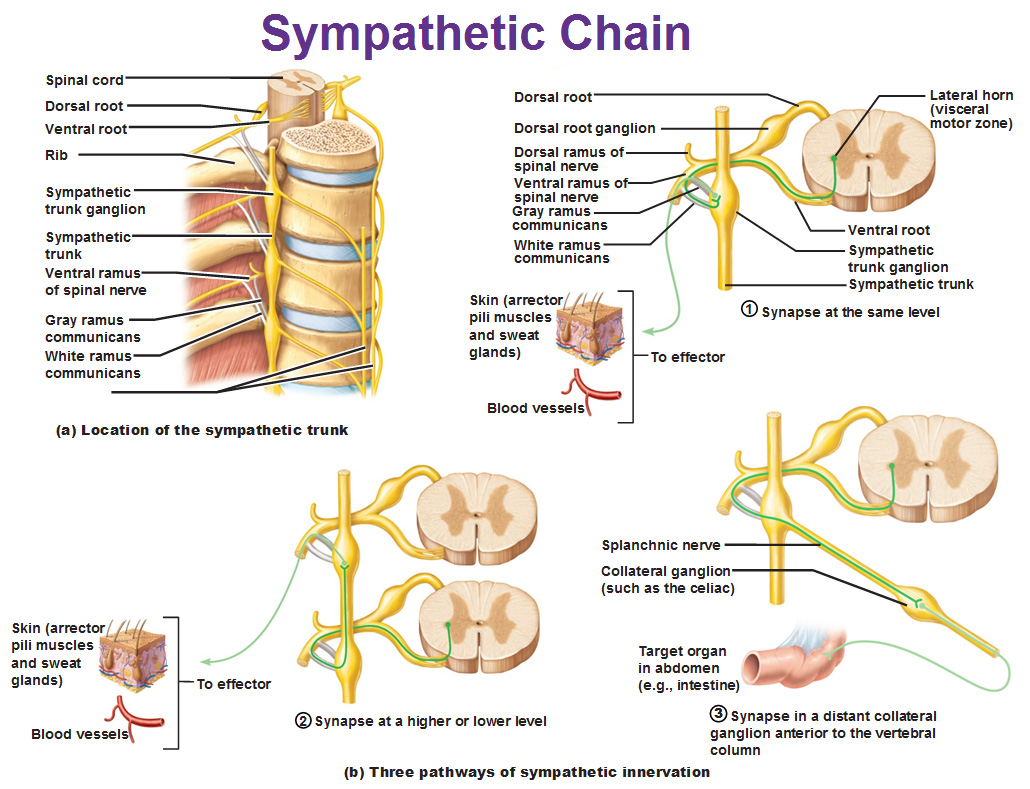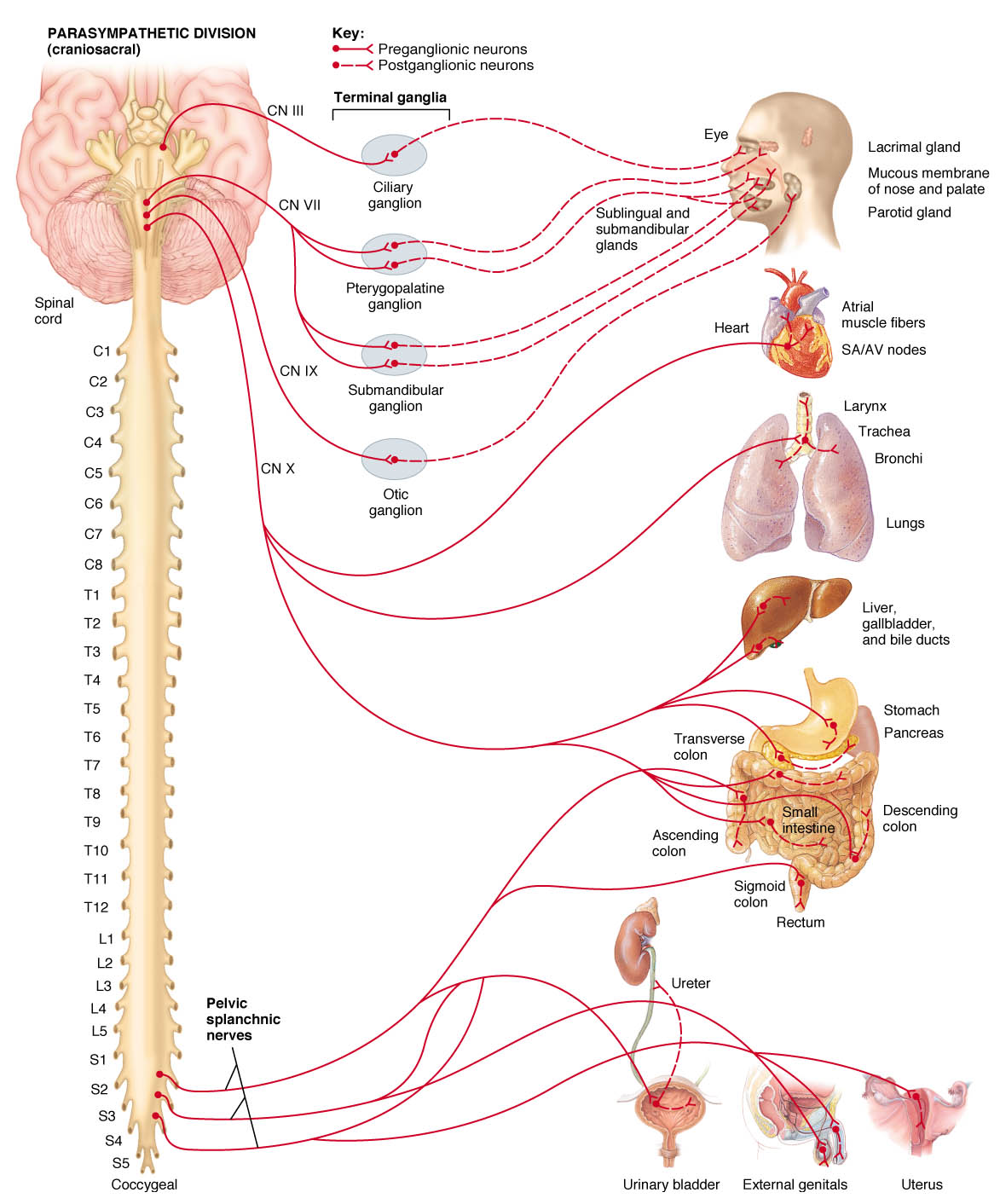A diagramattic explanation of anatomical terms such as rostral, caudal, superior, inferior, dorsal, ventral, coronal, sagittal, etc can be found here: Some Anatomical Terms | |
The spinal cord has a cylindrical segmented structure, each segment being derived from the somites of the embryo. A spinal nerve arises from each side of every segment and these segmental nerves leave the vertebral canal through the inter-vertebral foraminae. The spinal cord is protected by the vertebral column, to which the outermost of the meninges, the dura mater, is attached. Movements of the vertebral column are buffered by the presence of cerebrospinal fluid within the subarachnoid space - so the spinal cord floats in a tube of fluid between the arachnoid and pia mater. The spinal cord ends at the second lumbar segment of the vertebral column, below which the lower lumbar, sacral and coccygeal nerves travel through the subarachnoid space to reach the appropriate intervertebral foraminae where they leave the spinal canal. These nerves attached to the bottom of the cord appear like a horese's tail and are calles the 'cauda equina'.
|
|
|
Spinal White Matter The outside of the cord is white because it contains many parallel myelinated axons, some running the full length of the cord to the brainstem and beyond. It also contains axons that descend from the cerebral cortex (the cortico-spinal tract) and structures in the brainstem (reticulo-spinal tracts) that synapse on neurones in the grey matter Dorsal Columns The dorsal columns contain the axon collaterals (branches) of sensory neurones which synapse on neurones in the medulla. The information carried by these axons is concerned with touch and vibration. Lateral Columns The lateral columns contain axons of dorsal horn neurones that ascend to the thalamus and cerebellum, and descending axons originating from neuronal cell bodies in the cerebral cortex and structures in the brainstem. Anterior Columns A small number of cortico-spinal tract axons descend in the anterior columns of the cord. More information about Tracts and their functions can be found in the section on Tracts in the CNS. |
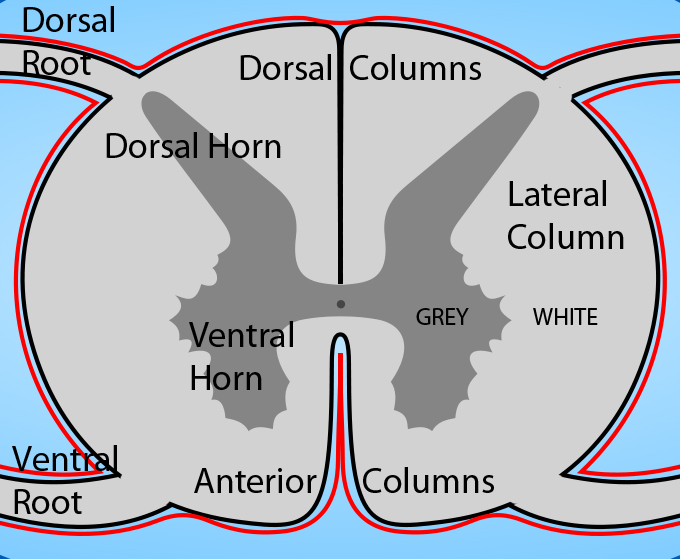 The red lines represent the pia mater. Spinal Grey Matter All segments of the cord have grey matter in an H-shaped arrangement around its central canal. It is divided into two horns : dorsal and ventral. In some segments there is a small additional horn- the lateral horn, adjacent to the central canal, that is important for autonomic functions. The grey matter consists mainly of neuronal cell bodies and synapses, whereas the white matter consists of bundles of fibres, grouped together into tracts which project to specific destinations. |
| |
|
|
The arterial supply of blood to the spinal cord comes through the anterior spinal artery (which runs ventrally in the midline), and two other arteries that run longitudinally near the dorsal root entry zone. These vessels get their blood from the vertebral arteries; other arterial vessels enter the cord along the dorsal and ventral roots, and anastomose with the other vessels. Occlusion of arterial vessels supplying the cord causes damage or death to the neurones and axons within their territory, and the diagram below shows the distribution of these vessels. Note that the anterior artery supplies the ventral horn and the lateral and anterior columns. Occlusion of the anterior spinal artery is characterized by loss of motor function and pain and temperature sensation below the level of occlusion but with preservation of touch sensation and proprioception. The symptoms of anterior spinal artery occlusion can be explained by interruption of the corticospinal and anterolateral pathways and preservation of the dorsal column pathways. More details in the section on Tracts in the CNS. |
|
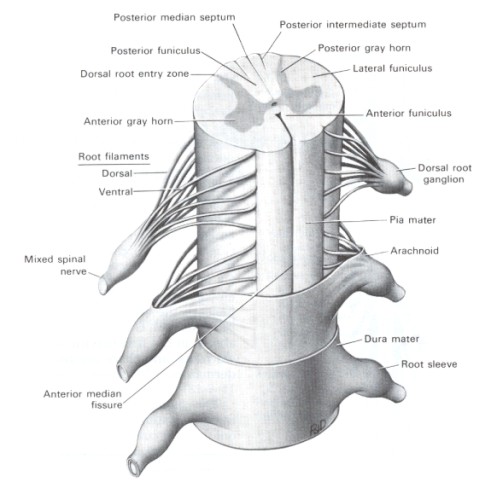
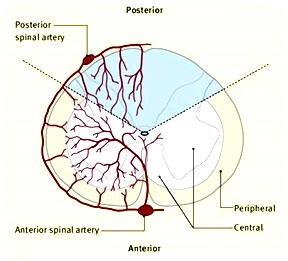
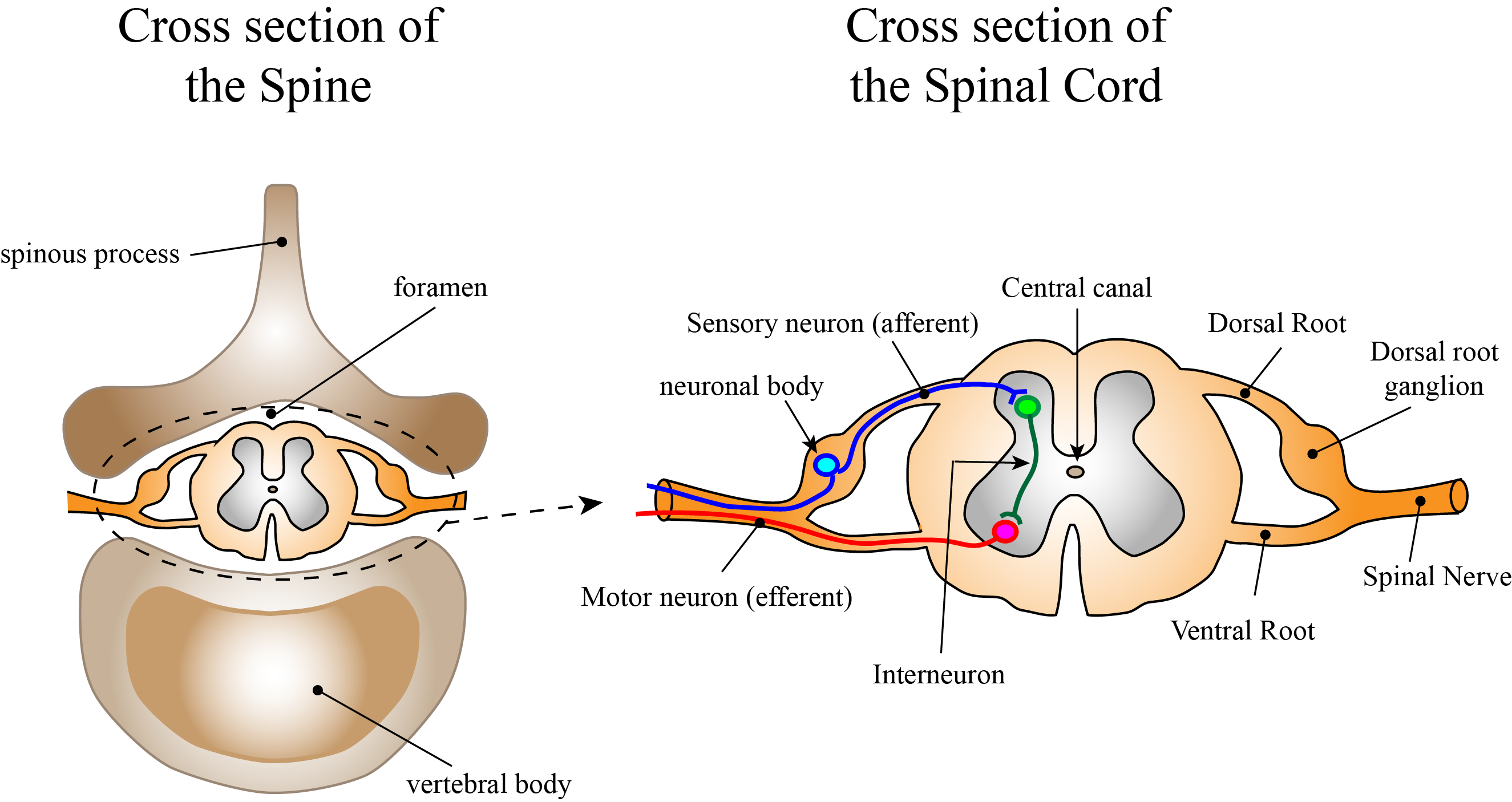
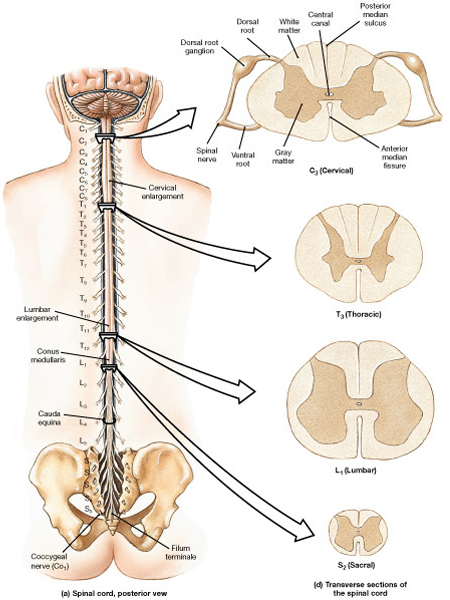
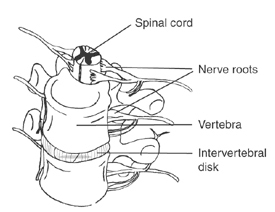
 *
*